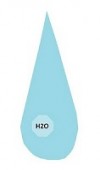
Mixing Saltwater
Mixing saltwater
Perhaps the most vital part of the marine aquarium is properly mixing salt water.
The reefs of the world are the most stable environments on Earth, despite human activity and pollution tipping that balance in the reefs of the Caribbean Sea and the east coast of Florida. The natural reef water possesses a set ratio of salts, minerals and trace elements. Temperatures vary little, and in most reefs, not at all.
Several different manufacturers product synthetic salts that posses the proper ratio of minerals and trace elements, but there are some brands that are superior to others in that respect. Seek out impartial reviews to give you an idea which salt mix to buy.
Natural Sea Water (NSW) contains 11 major elements and a handful of trace elements. To simulate that in our marine tanks one must make every effort to be as close to the natural world as possible.
Tap water is most usually quite unsuitable, so the majority of serious marine hobbyists have a reverse osmosis unit, and many add a dionization stage to help produce the purest water.
What you will need:
Pure freshwater
Marine Salts
A Hydrometer, Refractometer (better) or electronic salinity meter (best).
A clean container based on the amount of saltwater needed.
A clean large spoon or similar.
A heater
Air pump and air stone.
Mag drive pump or similar.
—-
Fill the container with the pure water. Then, start adding salt slowly, testing often. Most brands say X amount to X amount of gallons, but until you understand the correct amount of marine salt necessary for 1.026 specific gravity, which can also be listed as 35 parts per thousand (ppt), add marine salt slowly and test as you do it. Stir as you add the salt to mix it thoroughly.
Before use, use the heater to warm the water to that of your tank, and use the air pump to aerate the water and mix the warmth. After several hours while the heater and air pump do their work, use the Mag drive pump to pump the sea water into your aquarium.
Mixing saltwater properly is an elementary part of a marine aquarium, and a skill that must be learned.
Thank you for this write-up Dave! Cheers!
Hey Steelo,I was wondering if you had time to look at my 90 glalon reef? I just upgraded from a 30 glalon reef that was running successfully for about 5 years. I transfered everything but the live sand. For some reason all my perimeters are great but I lost 3 or 4 sps that were in the 30 for about 3 years. My softies and the clam look really healthy and have not been affected by the move, but the lps are not completely opening. any advice would be great.
I’m not trying to be ininltsug, but if you don’t the patience to research salt water aquariums yourself on your own, you probably don’t have the patience to set one up. Salt water is expensive and tricky, and one mistake can cost you a tank full of expensive fish.
i have a jewel tank which i have had 6 months i have mairne fish,and the first answer has a different tank to mine,i paid 500 pounds for mine and it has the lighting in the lid,but no built in filter,i had to purchase everything separately,i have a fluval external pump which sits under my unit,and was 200 pounds,and a heater,i have a few coral,and various other things,i would go to a aquatic shop like i did and see what tanks they have,my aquatic centre sell Jewel tanks and none of them have built in anything,some are on units,mines on a mahogany built in unit.visit an aquatic shop and ask there advice some fish do better with others,some like to be kept on there own,you need to check the levels everyday,and check nitrate levels.if you have never kept fish before i would start with tropical fish,marine tanks are time consuming in the early months until established,and are a lot more work than tropical fish.good luck
Hey i like ur tank very nice =]i am in process of mnikag a 10g atm i got protein skimmer, power flow i believe its called tht, filter , live rocks, and live sand ..i want 2 clown fishes and one anemone what else do i need for this? im pretty sre i need the light what light do i need?
Tomomi, a ten gallon tank will not work for either clownfish or a anemone. The below links can help you better understand some of the elements to setting up a healthy marine aquarium
http://www.aquaticcommunity.com/aquariumforum/showthread.php?t=76398
http://www.aquaticcommunity.com/aquariumforum/showthread.php?t=80662
http://www.aquaticcommunity.com/aquariumforum/showthread.php?t=76703
Elvis, I would suggest asking your question in our forum (link below). You could get a lot of advice from many experianced people that way
http://www.aquaticcommunity.com/aquariumforum/forumdisplay.php?f=62
I told my grantdmoehr how you helped. She said, “bake them a cake!”
I have kept fresh water fish of a long while and have decided to start keepnig marine fish. But I do not know how to take care of coral, as I know it is alive. Can I take coral out of the water? Am I allowed to touch coral? How will I know if my Coral dies? And can I put the coral in before the water is finished cycling or after? Does coral count as decoration?
Andre: you need to cycle your tank before adding any corals. At a very very basic level, think of corals like you would marine fish. Corals are living animals that have specific environmental requirements in order to remain healthy